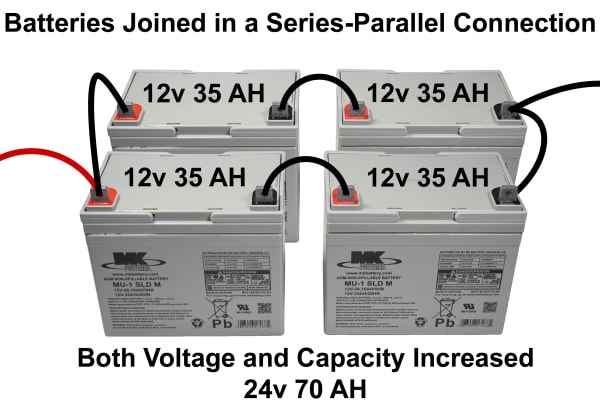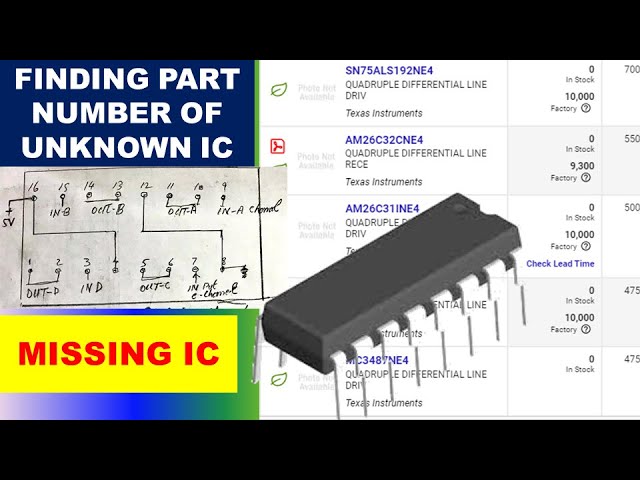The Best Way to Connect Multiple Batteries
When it comes to powering devices or vehicles that require more voltage or capacity than a single battery can provide, connecting multiple batteries in series or parallel is a common solution. However, it’s important to do this correctly to ensure optimal performance and safety. In this article, we’ll discuss the best way to connect multiple batteries to get the most out of your power source.
Series vs Parallel Connection
Before we dive into the nitty-gritty of connecting multiple batteries, let’s first understand the difference between series and parallel connections. In a series connection, the positive terminal of one battery is connected to the negative terminal of the next, resulting in increased voltage. Parallel connection, on the other hand, involves connecting all the positive terminals together and all the negative terminals together, which increases the overall capacity.
Best Practices for Series Connection
When connecting batteries in series, it’s crucial to ensure that all batteries in the circuit are of the same capacity and voltage. Mismatched batteries can lead to unequal discharge and potential damage to the batteries. Additionally, it’s essential to connect the batteries in the correct sequence – positive terminal to negative terminal – to create a seamless flow of electrons.
Another important consideration when connecting batteries in series is to use a battery management system (BMS) to monitor the voltage of each individual cell and prevent overcharging or undercharging. This will extend the lifespan of the batteries and ensure safe operation.
Optimal Practices for Parallel Connection
When connecting batteries in parallel, it’s essential to use batteries of the same voltage and capacity to avoid any imbalance in the circuit. It’s also recommended to use thick and short cables to connect the batteries to minimize resistance and ensure more efficient power transfer.
Additionally, it’s important to use a battery isolator or a smart battery charger to prevent overcharging or undercharging when batteries are connected in parallel. This will help maintain the health of the batteries and prevent any safety hazards.
Conclusion
Connecting multiple batteries can be a great way to increase voltage or capacity for various applications. By following the best practices for series and parallel connections, you can ensure that your power source is efficient, reliable, and safe. Remember to always use the correct type and size of batteries, as well as proper monitoring systems, to get the most out of your battery setup.
The Best Way to Connect Multiple Batteries
When it comes to powering devices or vehicles that require more voltage or capacity than a single battery can provide, connecting multiple batteries in series or parallel is a common solution. However, it’s important to do this correctly to ensure optimal performance and safety. In this article, we’ll discuss the best way to connect multiple batteries to get the most out of your power source.
Series vs Parallel Connection
Before we dive into the nitty-gritty of connecting multiple batteries, let’s first understand the difference between series and parallel connections. In a series connection, the positive terminal of one battery is connected to the negative terminal of the next, resulting in increased voltage. Parallel connection, on the other hand, involves connecting all the positive terminals together and all the negative terminals together, which increases the overall capacity.
Best Practices for Series Connection
When connecting batteries in series, it’s crucial to ensure that all batteries in the circuit are of the same capacity and voltage. Mismatched batteries can lead to unequal discharge and potential damage to the batteries. Additionally, it’s essential to connect the batteries in the correct sequence – positive terminal to negative terminal – to create a seamless flow of electrons.
Another important consideration when connecting batteries in series is to use a battery management system (BMS) to monitor the voltage of each individual cell and prevent overcharging or undercharging. This will extend the lifespan of the batteries and ensure safe operation.
Optimal Practices for Parallel Connection
When connecting batteries in parallel, it’s essential to use batteries of the same voltage and capacity to avoid any imbalance in the circuit. It’s also recommended to use thick and short cables to connect the batteries to minimize resistance and ensure more efficient power transfer.
Additionally, it’s important to use a battery isolator or a smart battery charger to prevent overcharging or undercharging when batteries are connected in parallel. This will help maintain the health of the batteries and prevent any safety hazards.
Conclusion
Connecting multiple batteries can be a great way to increase voltage or capacity for various applications. By following the best practices for series and parallel connections, you can ensure that your power source is efficient, reliable, and safe. Remember to always use the correct type and size of batteries, as well as proper monitoring systems, to get the most out of your battery setup.



